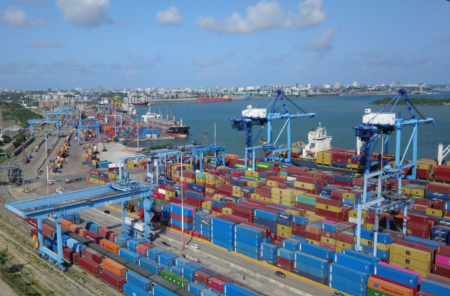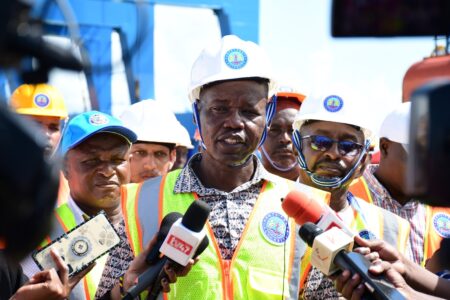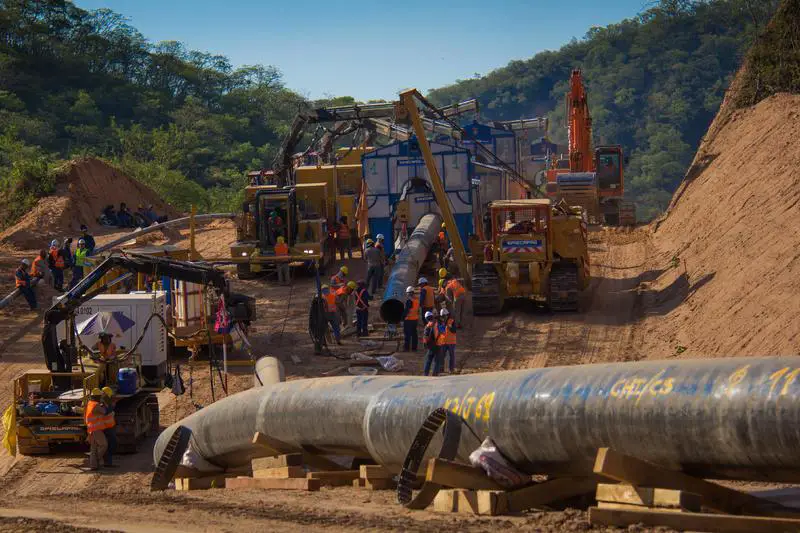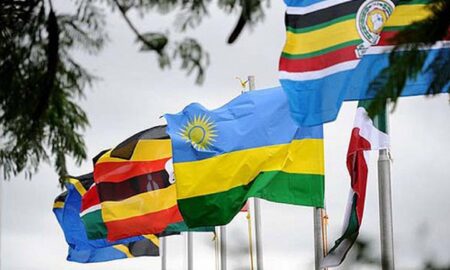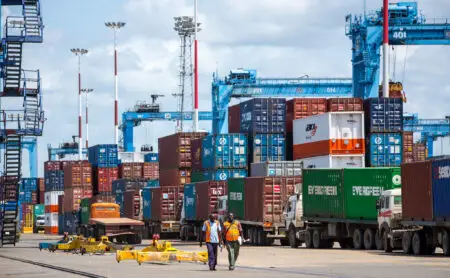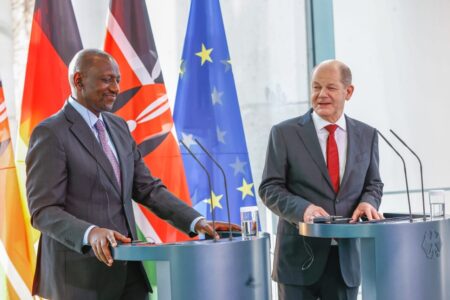The Kenya Revenue Authority (KRA) has signed a Transhipment Standard Operating Procedures (SOPs) charter with stakeholders at the port of Mombasa to enhance cargo clearance efficiency and boost regional trade.
As part of a commitment to boost port operations and clear bottlenecks affecting efficient cargo movement, KRA has signed the Transhipment SOPs for the Port of Mombasa with the Kenya Ports Authority and the Kenya Shipping Agents Association.
READ:New equipment at Mombasa port to reduce expenses by 30 per cent
KRA Customs and Border Control Commissioner, Mr. Kevin Safari, KPA General Manager Operations Captain William Ruto and the Kenya Shipping Agents Association CEO Juma Ali Tellah have described the formulation of the transhipment SOPs as a key milestone for the shipping stakeholders.

The adoption of a bidding SOPs, they explained, will play a key role in raising efficiency levels at the port of Mombasa.
“The SOPs have been developed to international standards and will enhance the transhipment process by removing process bottlenecks that have previously occasioned cargo clearance delays,” the trio said in a joint statement.
It is expected that inter-agency relations at the Port of Mombasa will be streamlined with clear performance targets and processes.
They give clear timelines to each party and also emphasise the provision of adequate resources to clear transhipment cargo expeditiously.
Mombasa Port handled 12,189 TEUs in transhipment in April 2019, an increase of only two per cent from April 2018. This is expected to increase rapidly in future with the implementation of the SOPs.
Transhipment is the shipment of goods or containers to an intermediate destination, then to another destination. One possible reason for transshipment is to change the means of transport during the journey, for instance from ship transport to road transport, known as transloading.
Kenya’s Dock Workers Union has been pushing to have the second container terminal at the port dedicated to transshipment cargo to increase cargo thoughput at the port of Mombasa.
According to the union, Mombasa has the capacity to become a transshipment hub, positioning the port on the global map, which it says will subsequently greatly contribute to the country’s economy.
The Port of Mombasa has two container terminals namely the Mombasa Container Terminal and the newly built Kipevu Container Terminal with an annual total capacity of 1.65million TEUs currently. Container operations at the Port of Mombasa entail discharging and loading of vessels, stacking and unstacking of containers in the yard and delivery, receipt of import and export containers.
Toyo Construction Co., Ltd. of Japan has been undertaking phase two of expansion of the Mombasa port second container terminal in a Ksh35 billion (USD346.2 million) contract.
The expansion is meant to increase the second terminal’s capacity by an extra 450,000 twenty-foot equivalent units (TEUs), pushing up the port’s capacity to 2.1 million TEUs.
The first segment of the three-phase project was completed in February 2016 at a cost of Ksh28 billion (USD276.9 million) raising the facility’s capacity to nearly 1.7 million TEUs from 1.08 million TEUs.
The second container terminal, which is being built on 100 acres at Kilindini Harbour, is projected to ease congestion at the port of Mombasa, enabling the facility to fight off growing competition mainly from the port of Dar es Salaam and Tanga.
Last year, total throughput handled at the Mombasa Port increased by 2.2 per cent from 30.3 million tonnes in 2017 to 30.9 million tonnes, the Economic Survey 2019 indicates.
The volume of container traffic handled increased by 9.6 per cent from 1.2 million twenty-foot Equivalent Units (TEUs) to 1.3 million TEUs, supported by expansion and investment in modern equipment.
The government has been implementing a raft of measures to speed up cargo evacuation among them being the use of the Standard Gauge Railway (SGR) which is currently offering freight services between the port and the KPA ran Nairobi Inland Container Deport(ICD).
READ ALSO:Boost for East Africa trade as Kenya commences SGR cargo services
:Tanzania moves to improve Tanga Port usage
:Dar port expansion now halfway






